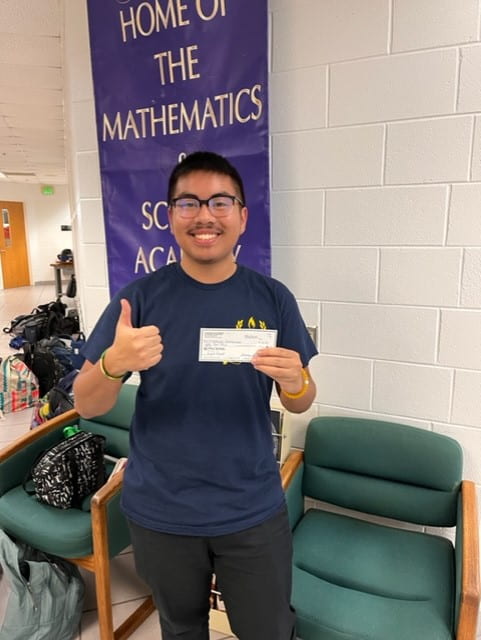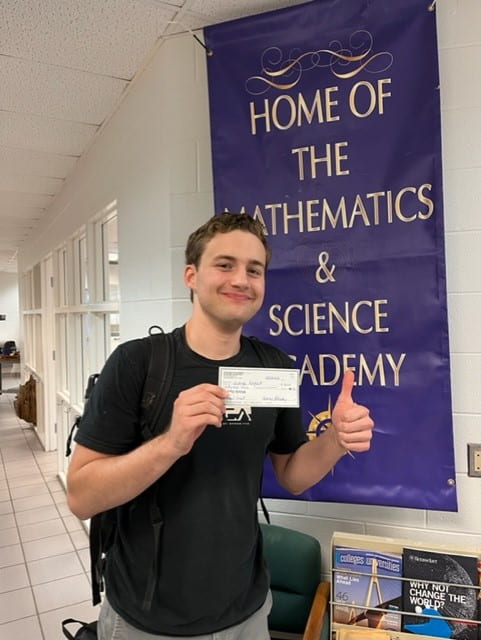Here at the MSA, we LOVE our parents. They support student learning in all kinds of ways. We have had parents serve as guest lecturers, who share how classroom content connects to their professions. We have had parents serve as valuable mentors, who welcome student shadows (students who aren’t their own children) to learn about a profession as a part of the senior project experience. If you are interested in either of these opportunities to get involved, please contact Allison Graves, the senior project advisor.
However, you don’t have to be a STEM professional directly working with students to be a helpful member of our parent network! Join our MSA Boosters. The MSA Boosters support student learning through senior project grants, underclassman enrichment program grants, and a senior scholarship. Student recipients of these opportunities must have at least one parent who is a booster. Membership in the organization must be renewed each year, but know that these funds directly support our students. In addition to providing funds for our senior celebration, the Boosters support student work. Here are two current seniors, who have directly benefited from Booster-supported programs:
Cedrick D.’s senior project: “Redesigning the Kirby-Bauer Protocol to Detect the Relative Concentration of Environmental Antibiotics”

“Across the world, antibiotic resistance is developing as an emerging public health emergency, threatening to upend the state of modern medicine. One of the major breeding grounds of antibiotic resistance is the environment, as antibiotics begin to contaminate ecosystems nearby pollution sources such as livestock farms, dog parks, and waste facilities, leading to environmental antibiotic resistance that can be spread to pathogenic bacteria. Additionally, environmental antibiotic pollution can hinder plant growth and destroy local habitats. With this in mind, studies dealing with environmental antibiotic pollution are unfortunately still in their infancy.
Two main methodologies currently exist for these studies: direct measurement of environmental antibiotic concentration through liquid chromatography-mass spectroscopy or indirect measurement of antibiotic presence through testing environmental flora’s resistances in a disc diffusion test. Both are hindered by limitations in their scope of detection and their resource-, time-, and cost-intensive nature. As such, this research project attempts to determine whether direct testing of environmental water samples for antibiotic contamination can be done through a modified version of the Kirby-Bauer disc diffusion test. The standard agar depth and type of the Kirby-Bauer methodology will first be modified to test for the most sensitive combination of type and depth before testing it with antimicrobial-impregnated discs from stock solutions and, later, environmental water samples. If successful, this would create a more cost-effective and inclusive means of testing for antibiotic pollution, allowing for more widespread and informative studies that will help in combating the scourge of antibiotic resistance.”
Joshua B.’s senior project: “A LIDAR aided haptic vest for the visually impaired and special forces: The ARGUS vest”

“I am planning to create a working prototype of a LIDAR-aided haptic vest for the visually impaired and special services (i.e firefighters). VL53L1X sensors will be mounted on the outer sleeves, chest, and back to provide guidance in all directions. It is a similar concept to the backup sensor on modern cars, beeping faster as the car gets closer to an obstacle, instead, the beeping would be replaced with haptic motors that would let the user know in which direction an approaching obstacle is. The sensors in the jacket will all be connected to a Raspberry pi pico to process the distance data and set the haptic motors to the correct intensities. Planning, designing, and troubleshooting this product will help prepare me for engineering college and being an electrical/computer engineer. I will have to design circuit schematics, create PCBs, identify the right components to use, 3d model the enclosure for the mainboard, solder and assemble circuit boards, and code the microcontroller in C++.
For people with disabilities, it is often difficult to fit into society since people perceive you as different because of physical characteristics such as having a walking stick or a guide dog. This struggle to fit in creates psychological stress. My goal for creating this vest is for it to look like a normal piece of clothing, so the visually impaired won’t have to use a more noticeable seeing aid like a walking stick or guide dog. By being able to navigate their surroundings while wearing a plain vest, the visually impaired can function more easily.”
How can parents get involved?
We have a tremendously helpful MSA Booster Club. The Boosters support all kinds of projects–from securing lab resources to supporting student enrichment and independent projects. The Boosters are also a great community-sounding board for parents looking to connect with folks who have lived the life of an MSA parent. The Boosters plan to host social events this year for parents to connect and idea share.
How can you join and support this group’s efforts?
- You can become a member: Click Here!
- You can support their fundraisers:
- Buy a T-Shirt: Click Here!
- Holiday shop! Use the MSABC’s Amazon Smile link to do some holiday shopping: Click Here!
- Buy your groceries at a Kroger: Click Here!